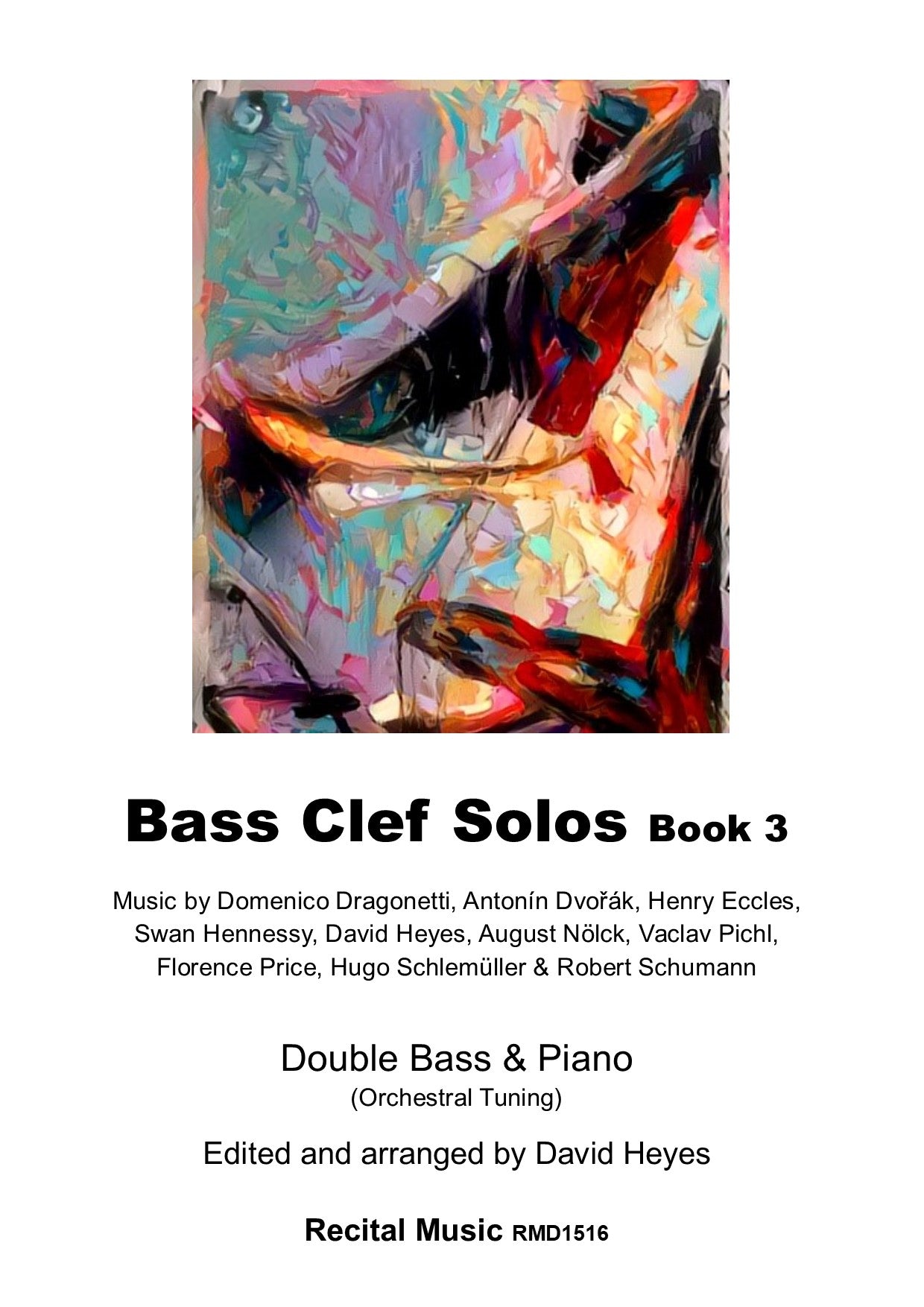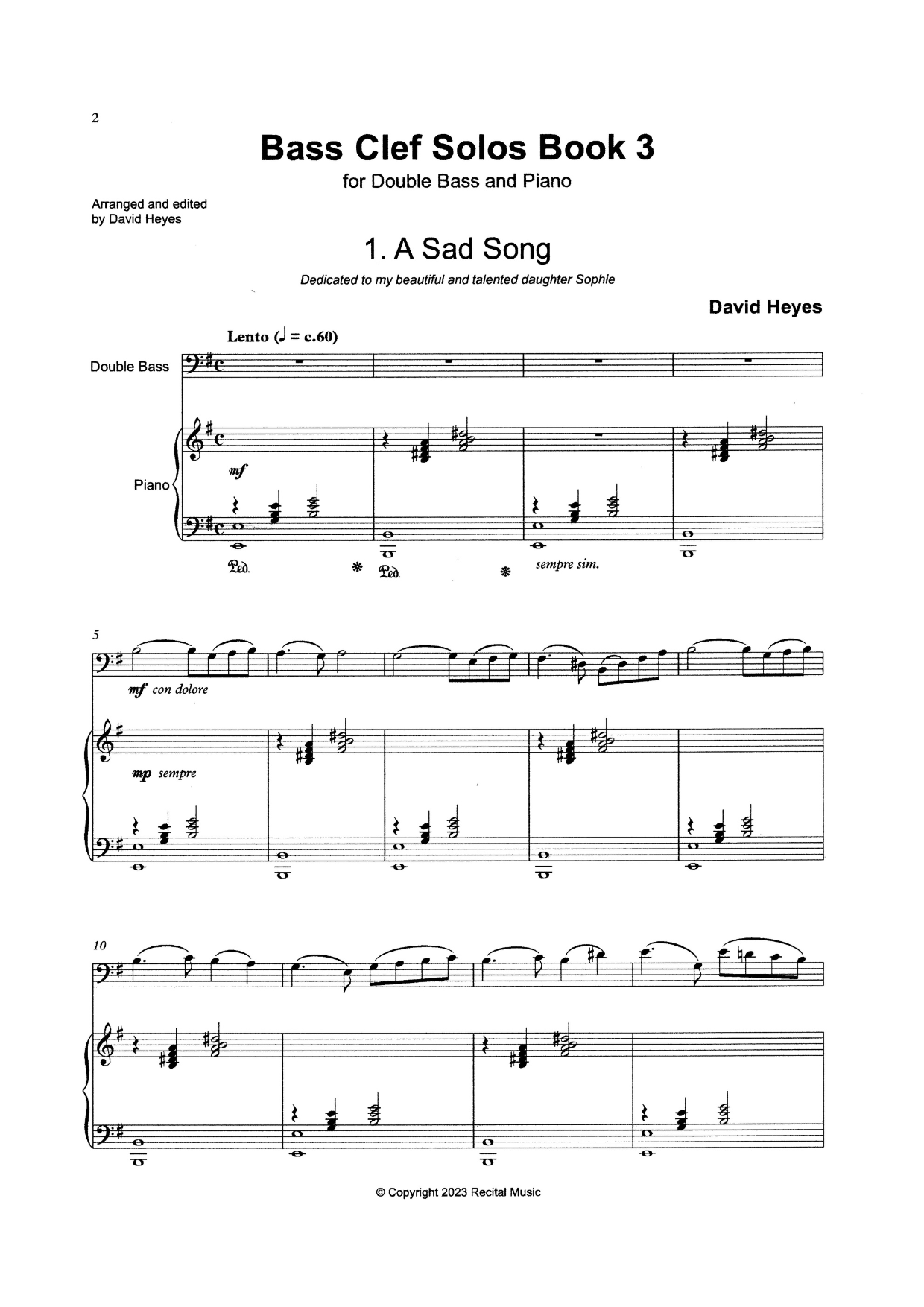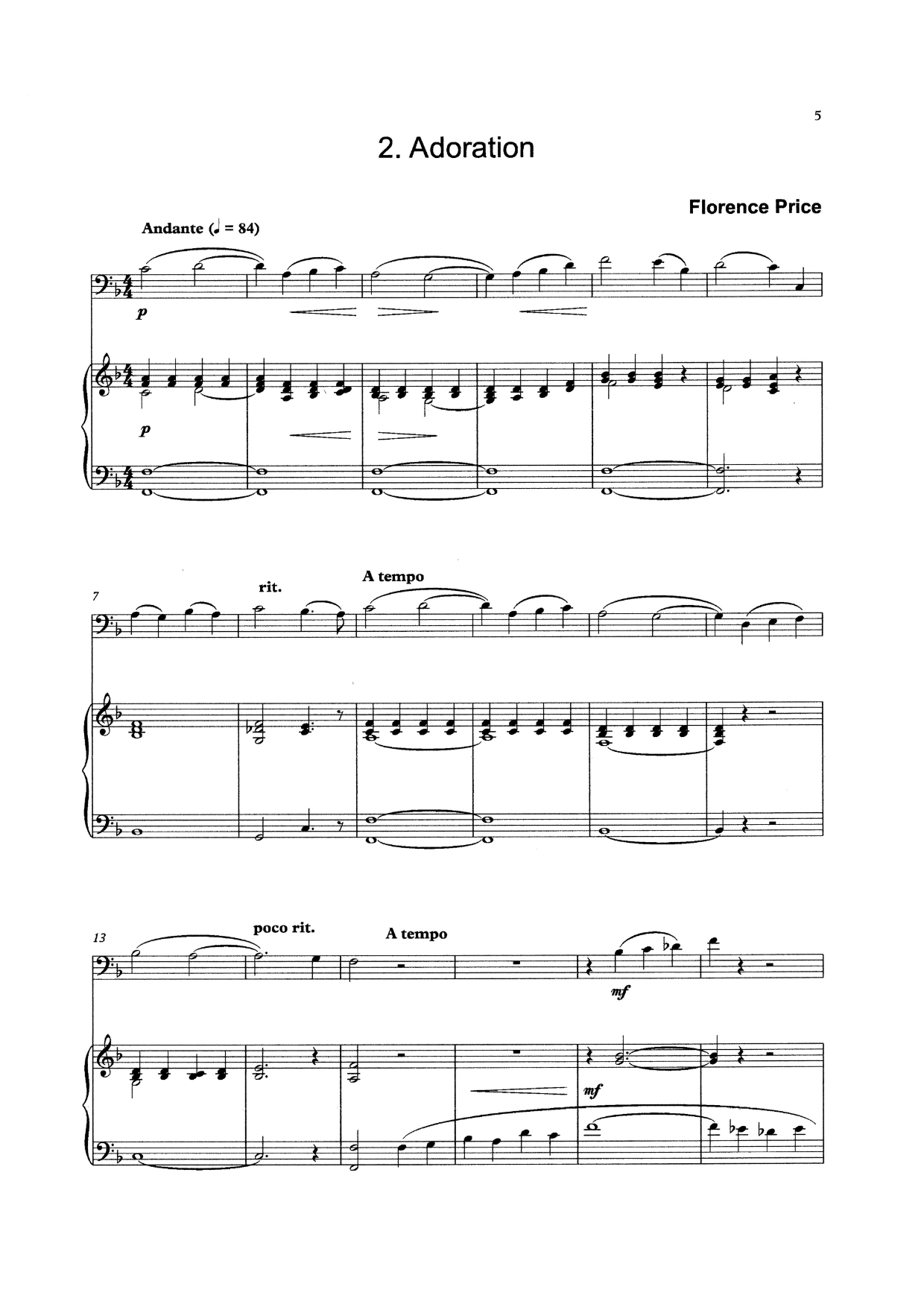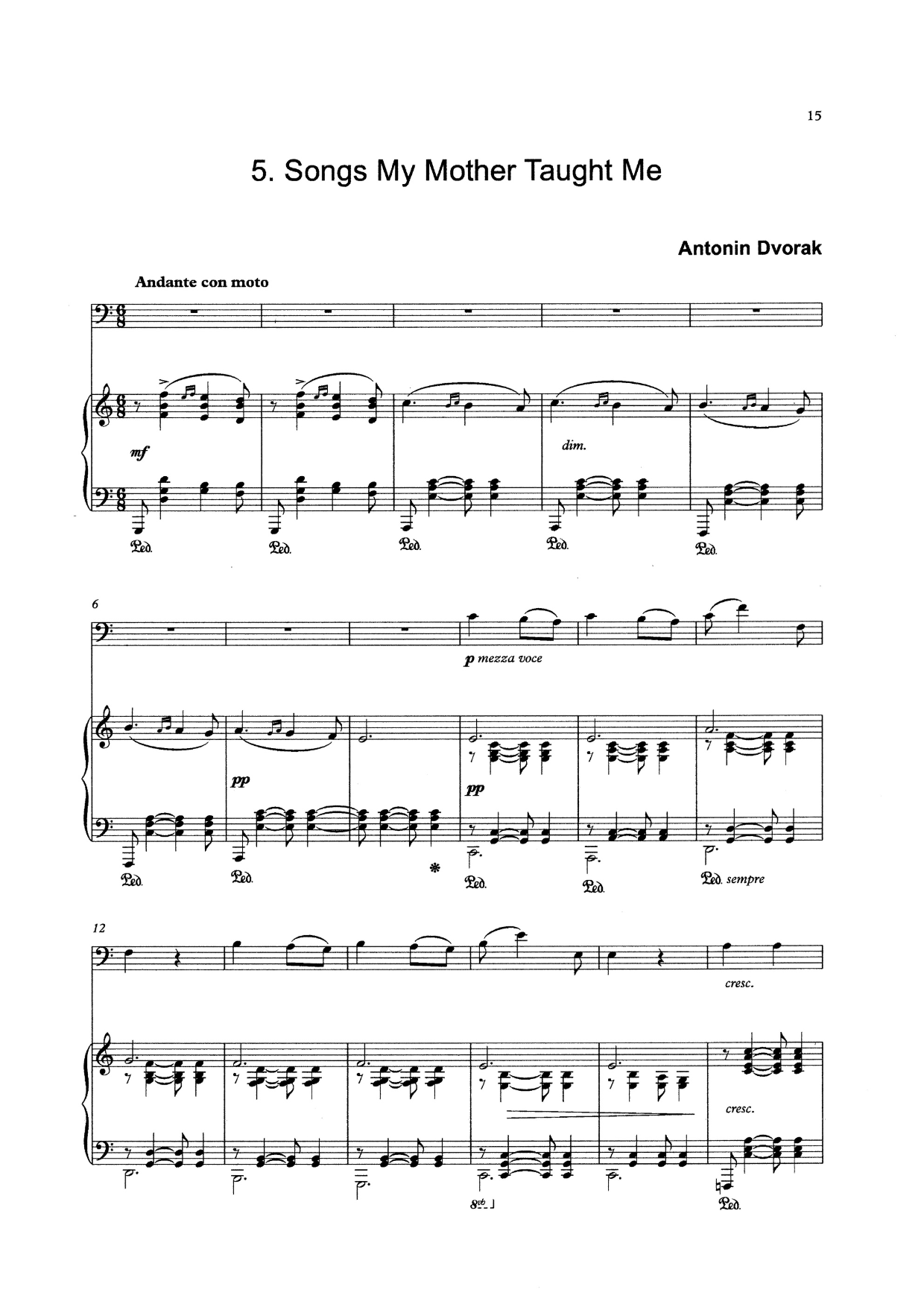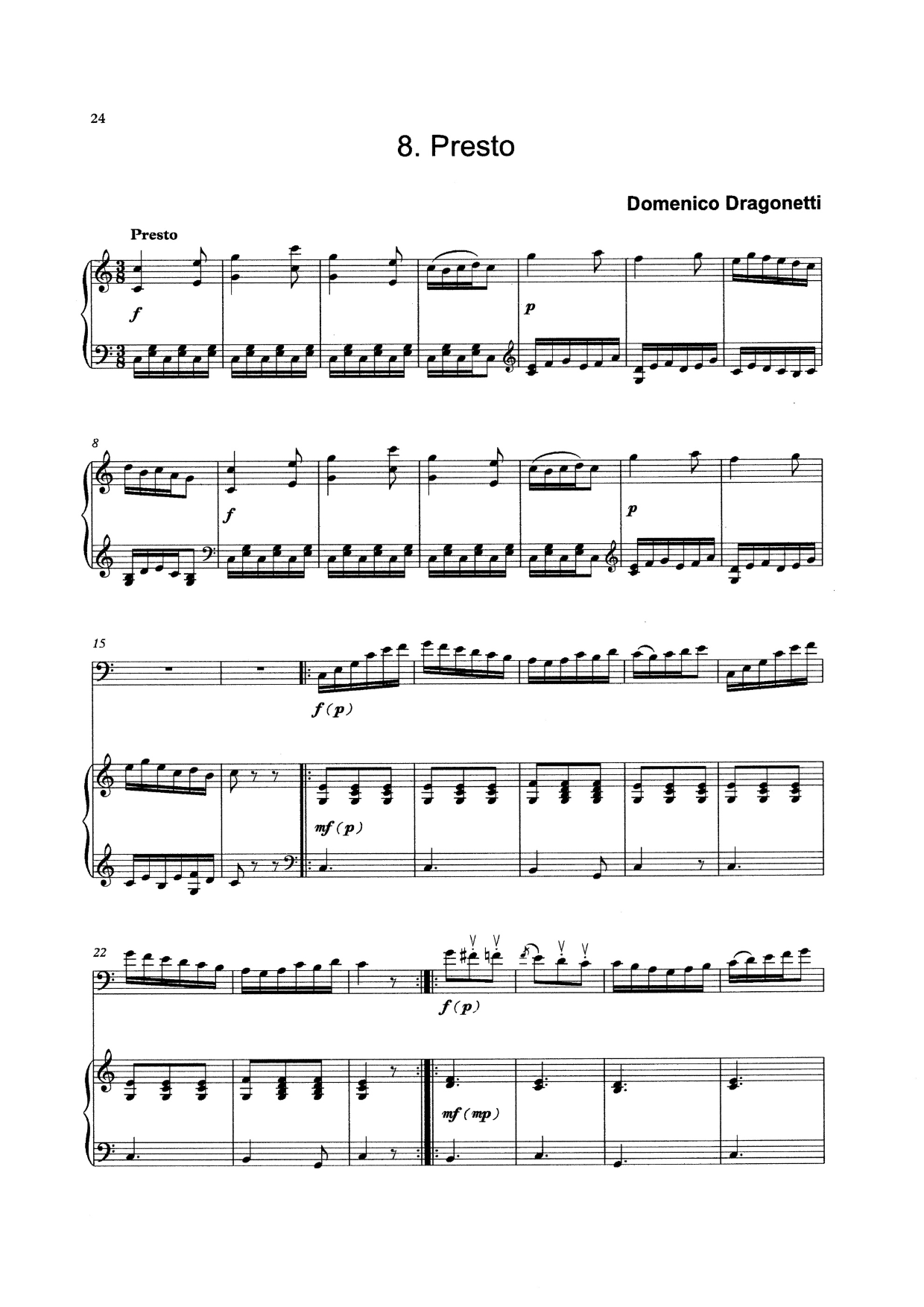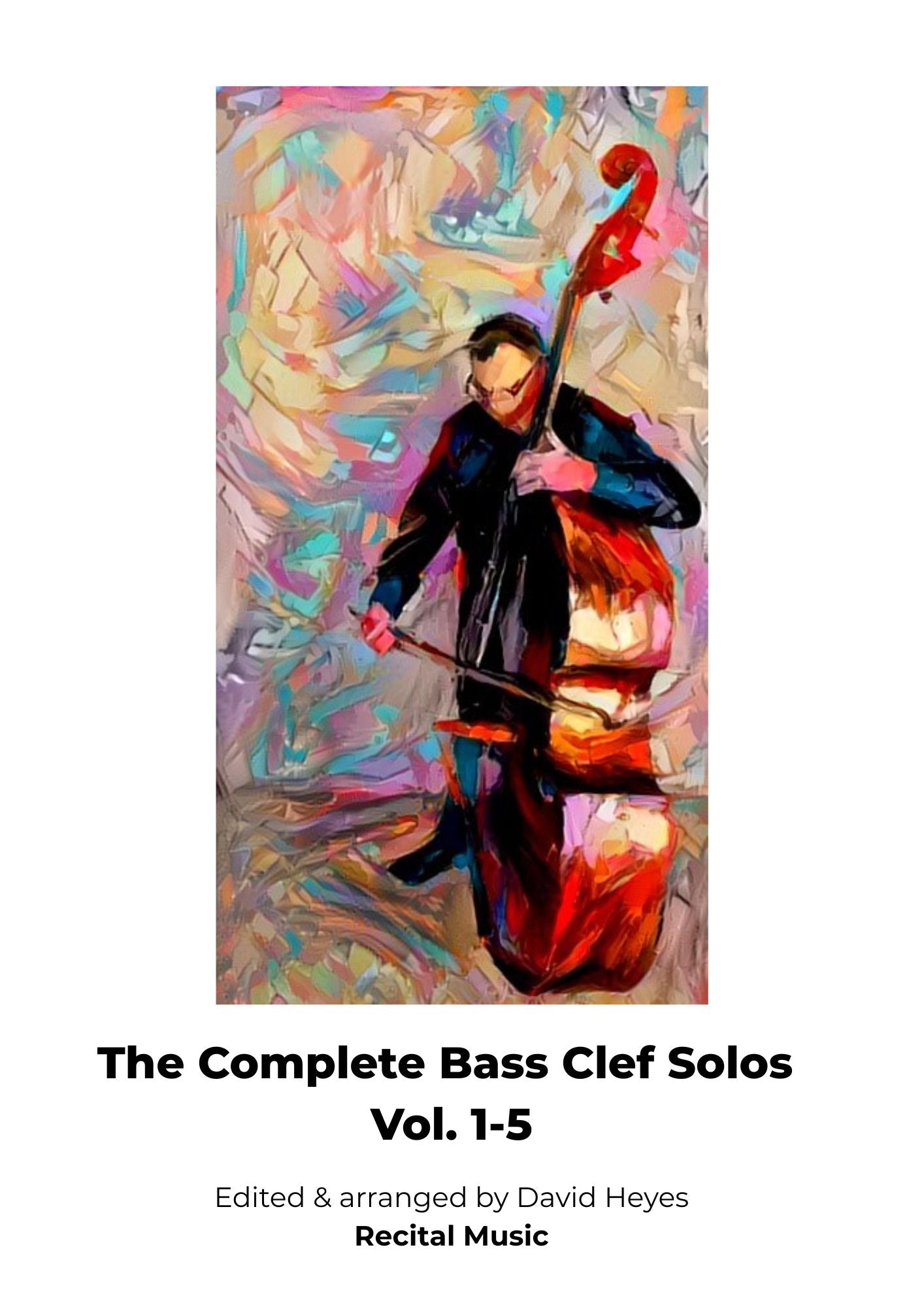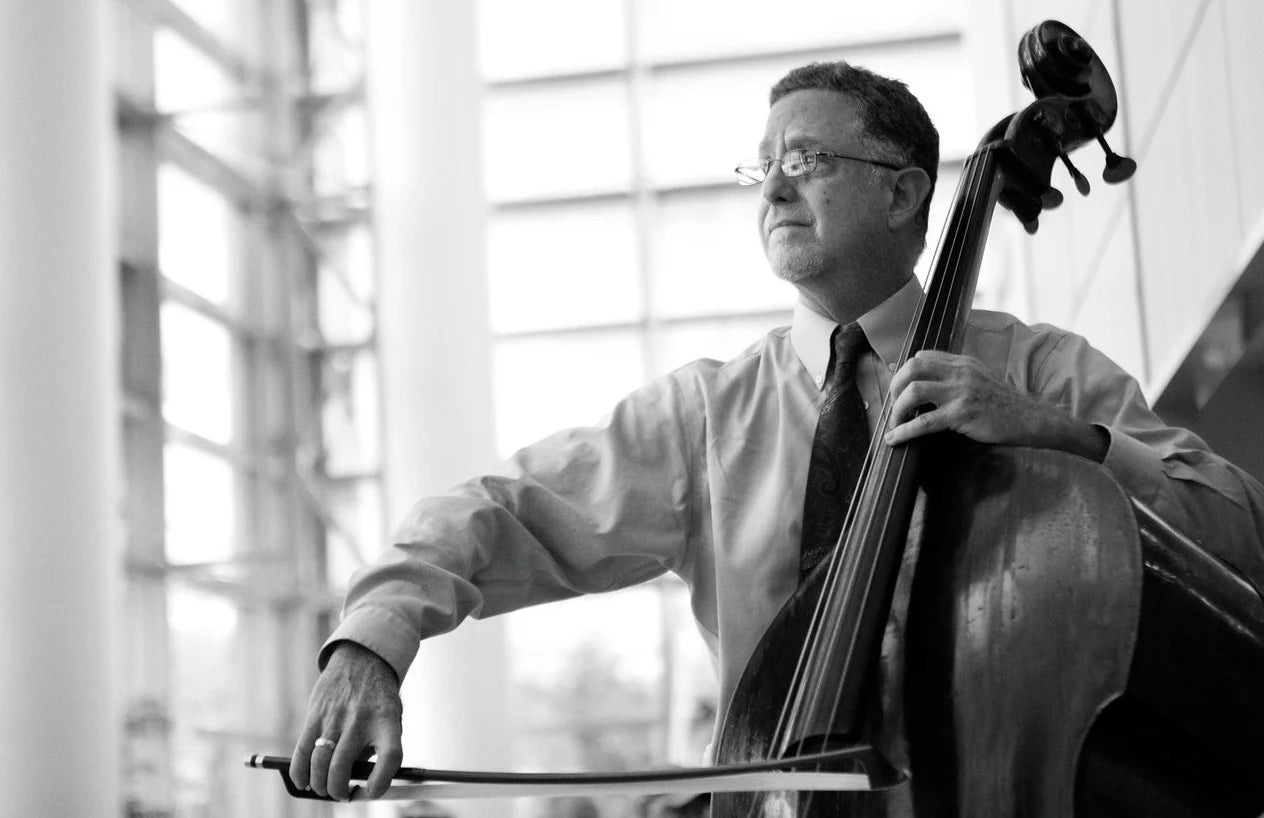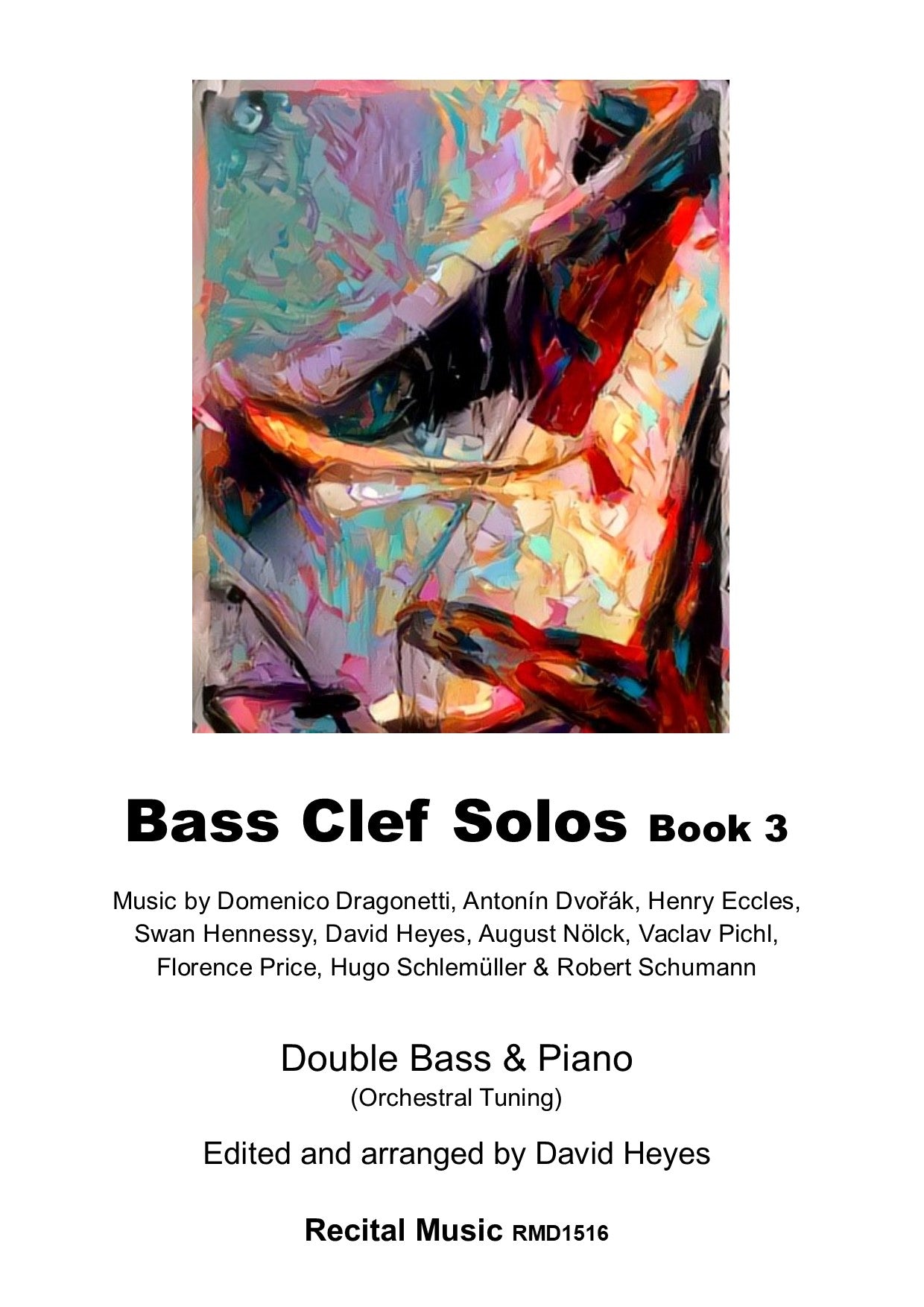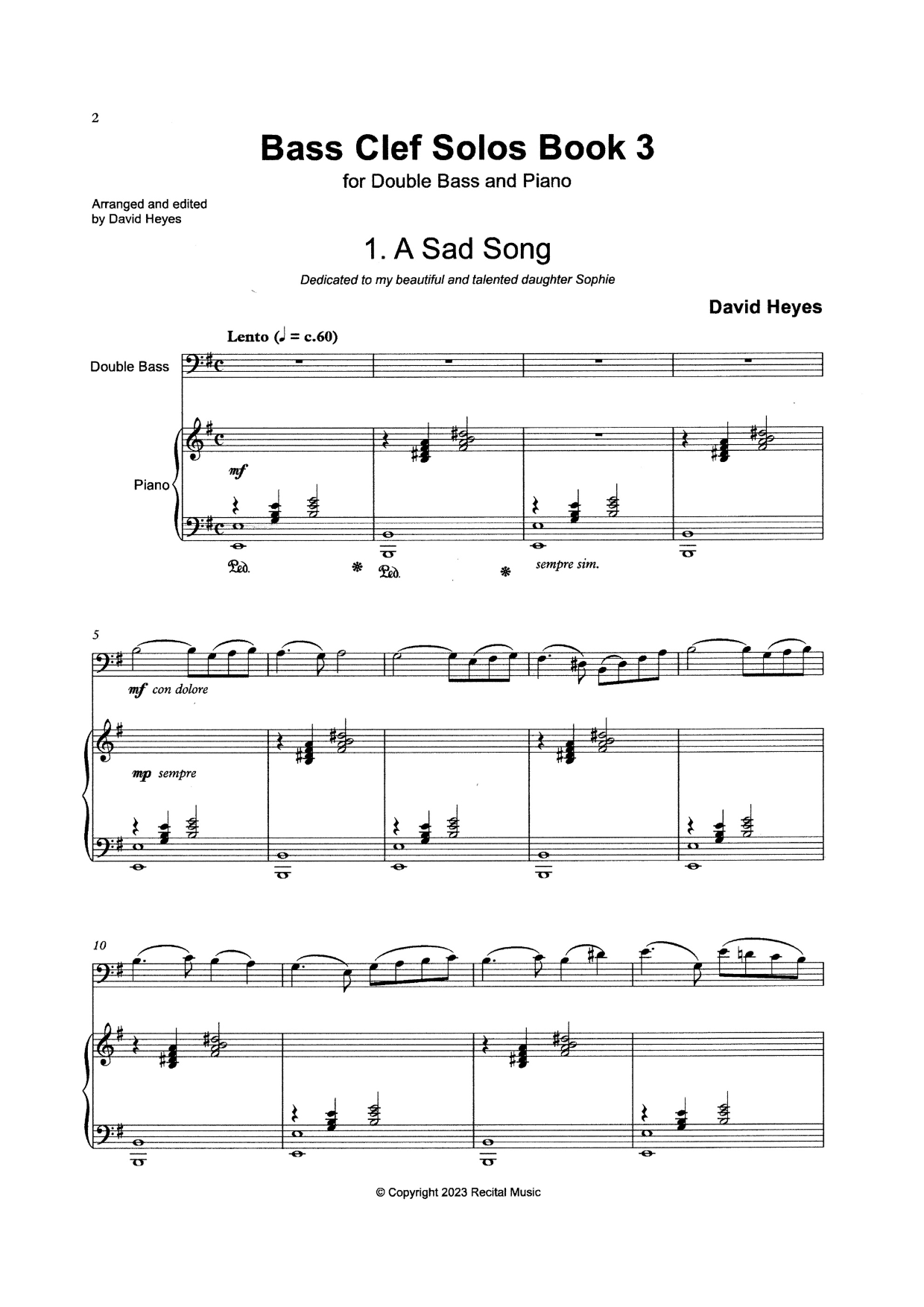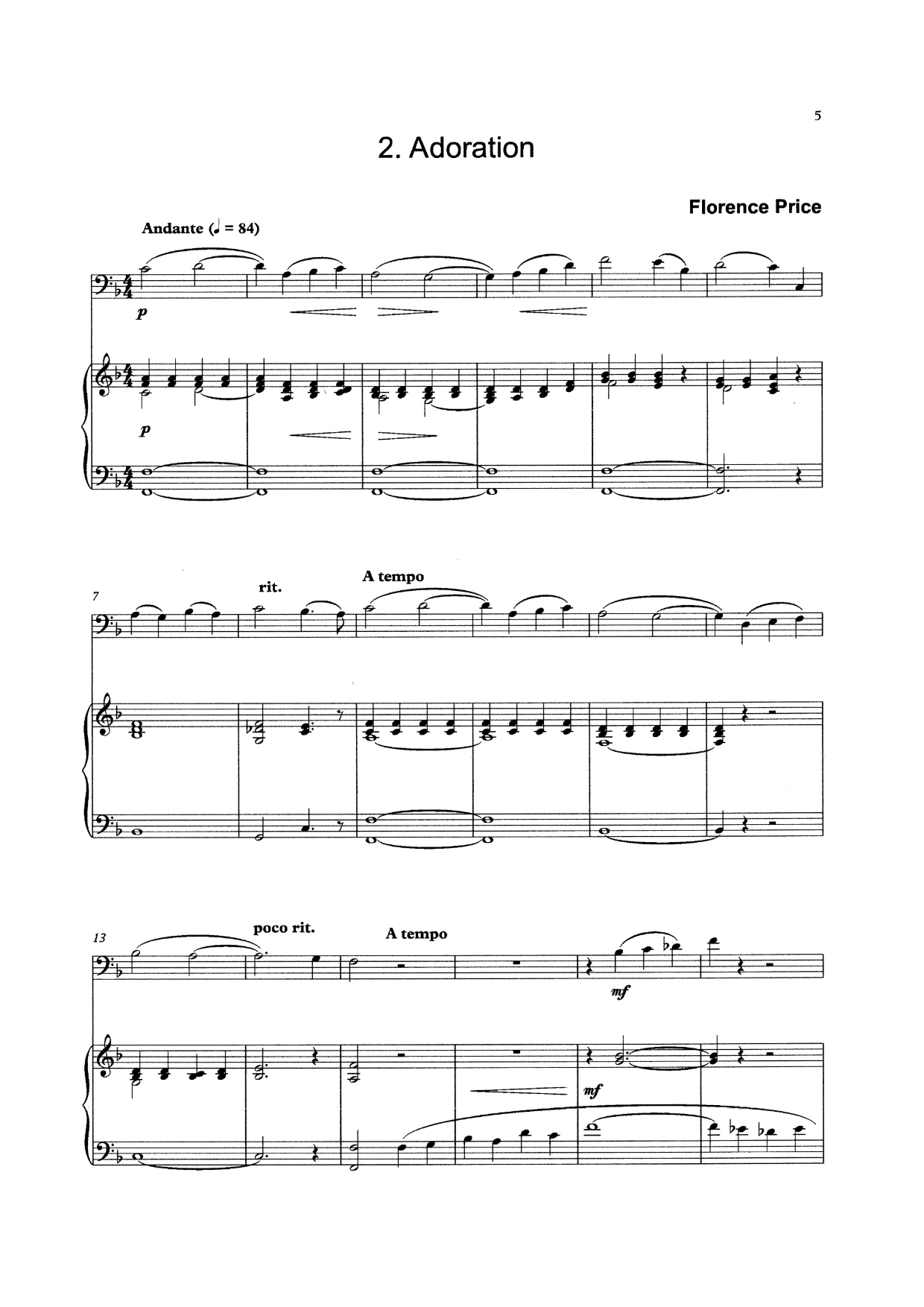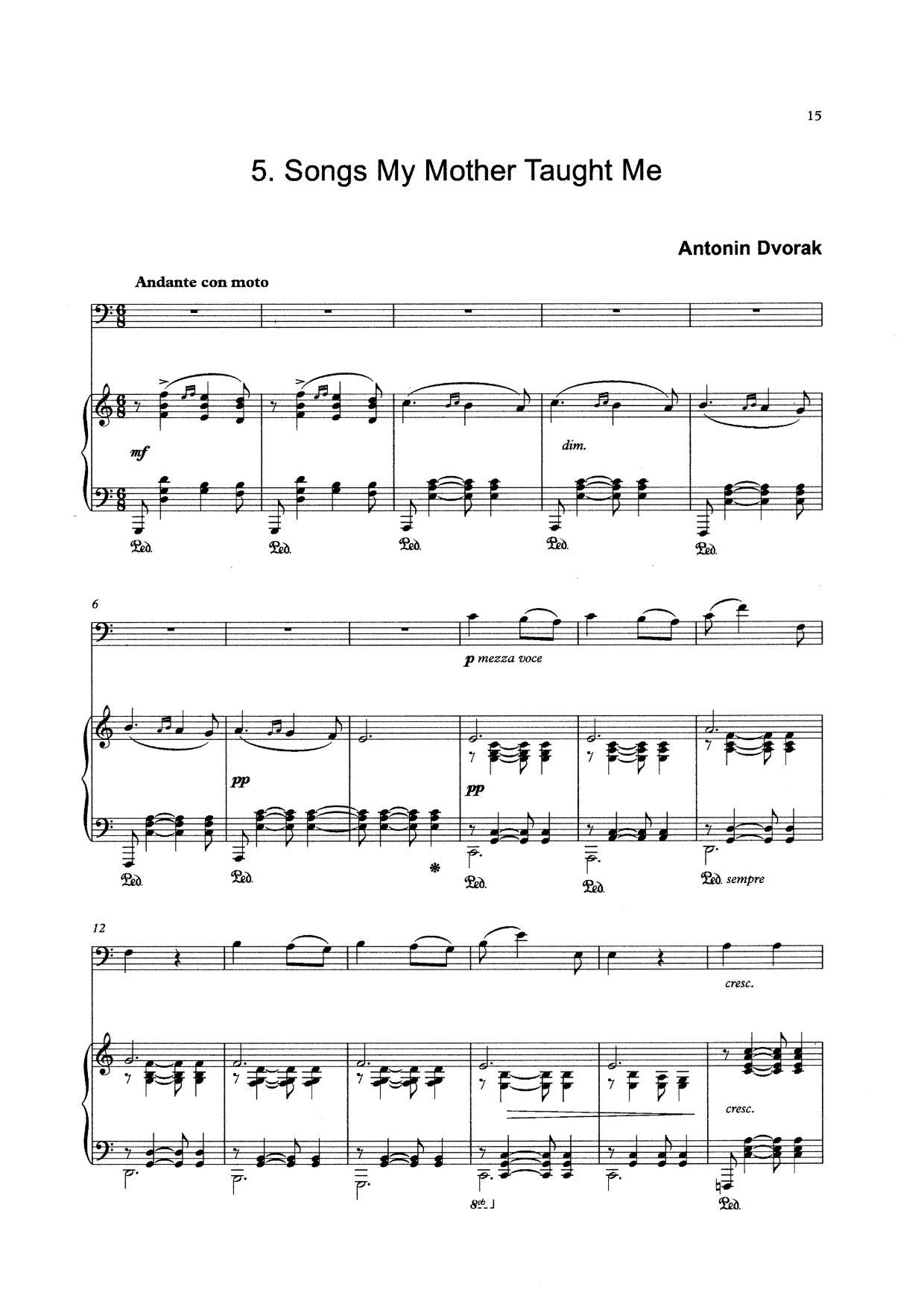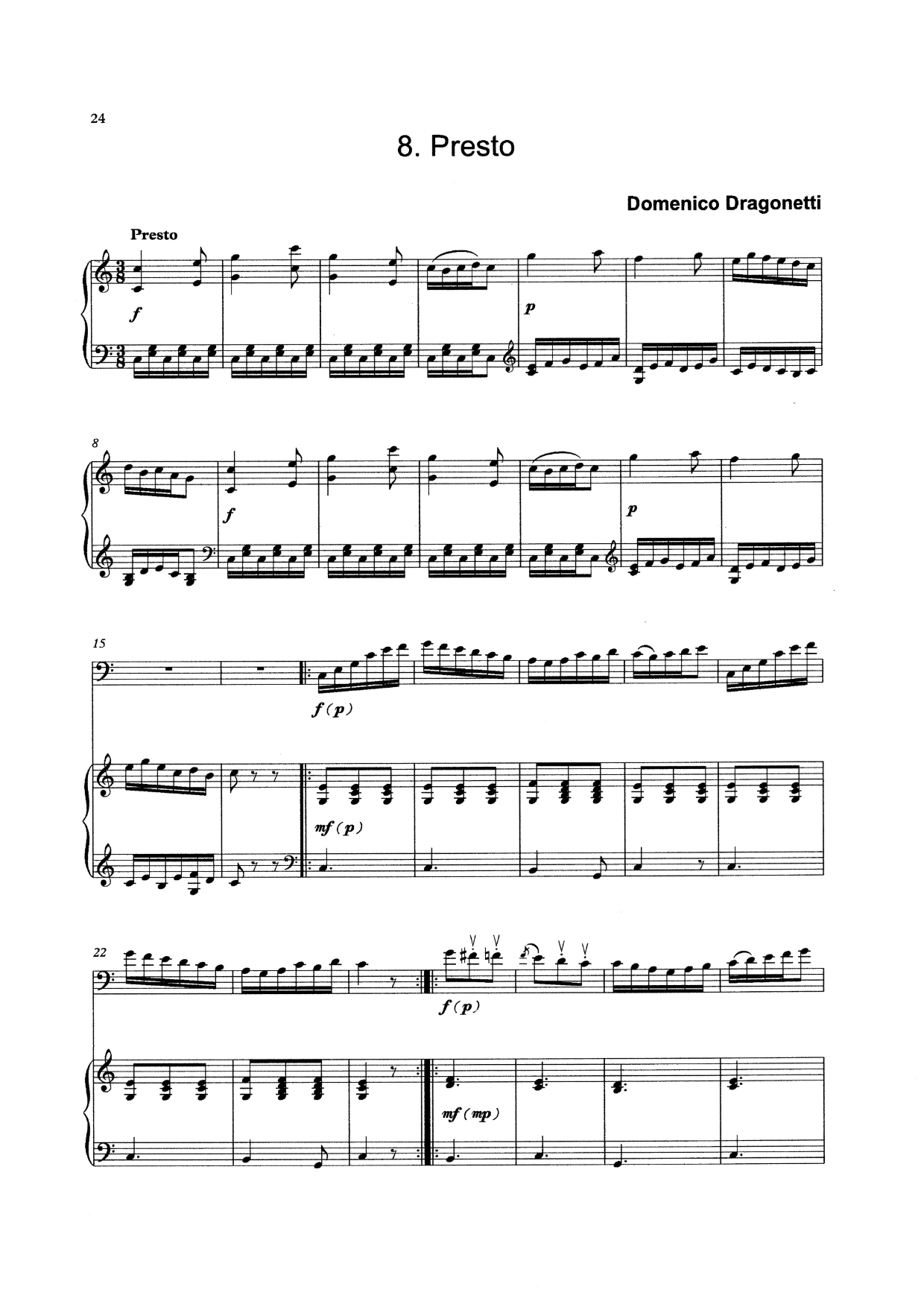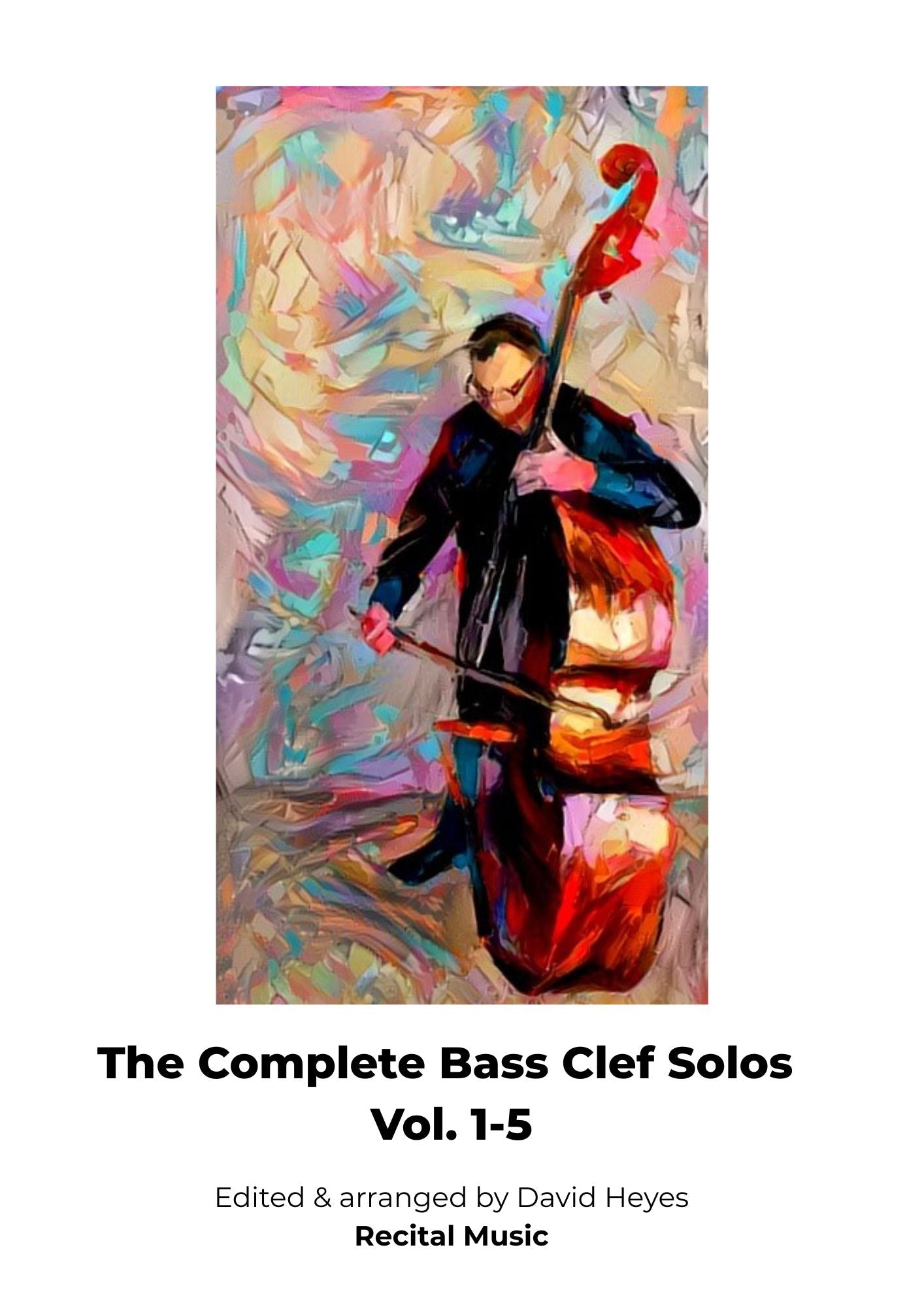David Heyes
Bass Clef Solos Book 3: 10 pieces for double bass & piano (edited by David Heyes)
Bass Clef Solos Book 3: 10 pieces for double bass & piano (edited by David Heyes)
Couldn't load pickup availability
About the Book
Bass Clef Solos Book 3 includes ten exciting and inventive pieces for the intermediate bassist, suitable for both concert and study repertoire. The collection features three original works and seven transcriptions in popular and accessible styles, from the 18th-century to the present day.
About the Series
Bass Clef Solos is a new series featuring fifty original works and transcriptions for the intermediate and progressing double bassist.
Divided into five books, each piece offers both musical and technical challenges in the orchestral range of the instrument, remaining in bass clef throughout, which are ideal for both study or concert use. Edited by David Heyes, the series will include music from the 16th to the 21st-century, in a range of styles and idioms, with something to suit most tastes. Each piece has been carefully selected for the series, with piano accompaniments that are supportive and accessible, creating an exciting and innovative collection that should appeal to bassists of all ages.
Save 20% when you buy the complete Bass Clef Solos Series
Purchase all volumes together and get 50 pieces for double bass and piano edited by David Heyes at a 20% discount compared to buying each volume individually. Explore the other volumes.
Table of Contents
1. David Heyes (b.1960) - A Sad Song
A Sad Song is from Suite ‘In Bohemia’ and was composed in 2023 for Hertl Remembered, to commemorate the 50th anniversary of the death of Czech composer-bassist František Hertl (1906-1973). Transposed a fifth lower in this new edition, A Sad Song demonstrates the lyrical and sonorous qualities of the double bass in its middle register, with a simple and supportive piano accompaniment which is limited to only two chords.
2. Florence Price (1887-1953) - Adoration
Adoration is originally for organ and was first published in 1951. It has subsequently been arranged for many instruments and is a beautiful and evocative miniature which transcribes well for the double bass. The solo line is slow and mellifluous, against a simple and chordal accompaniment, and the music of Florence Price, overlooked for many years, is finally taking its rightful price in the standard solo and orchestral repertoire across the world.
3. Robert Schumann (1810-1856) - Träumerei Op.15, No.7 Scenes of Childhood (Kinderszenen) Op.15 consists of 13 pieces for solo piano and was composed in 1838. Träumerei (Dreaming) is one of the most popular pieces from the series and has been transcribed for many instruments. In only 24 bars, the composer has created a perfect masterpiece of gentle simplicity and serenity which allows the double bass to sing in its rich lower and middle registers.
4. Hugo Schlemüller (1872-1918) - Légende Op.18, No.6
Hugo Schlemüller was a German cellist, composer and educator. He taught at the Hoch Conservatoire in Frankfurt am Main from 1902 alongside composing a wealth of concert and pedagogical music for the cello. Légende is taken from 6 Pieces for Concert and Salon, published in 1911, and contains beautifully reflective and subtle music, with a more animated middle section, reflecting salon music from a previous age.
5. Antonín Dvořák (1841-1904) - Songs My Mother Taught Me
Songs My Mother Taught Me is the fourth song from Dvořák’s Gipsy Songs Op.55, composed in 1880, and is one of the composers most popular and recognisable melodies. It is a perfect example of a folk-inspired 19th-century art song with a simple but wistful melody in 2/4 time against a chordal and evocative piano accompaniment in 6/8. The yearning melody transcribes well for the double bass playing in its rich and sonorous middle register.
6. Henry Eccles (1670-1742) - Largo
Sonata in G minor by Henry Eccles is at the very heart of the double bass repertoire today and the first movement has been newly transcribed a fourth lower to enable younger bassists to play this wonderfully evocative and expressive music. Eccles is primarily known for this one work and, although several movements of the sonata were written by other composers, it is believed that he wrote the slow movements demonstrating his wonderfully creative gifts for melody and invention.
7. Václav Pichl (1741-1805) - Andante molto
Pichl composed two concertos for the double bass, although there is no documentation detailing when they were composed. Both in D major and for Viennese tuning, the Andante molto is wonderfully straightforward and accessible slow movement, contrasting lyrical melodies with arpeggio figures in the lower register of the double bass. A brief cadenza has been added but the enterprising bassist can easily write their own.
8. Domenico Dragonetti (1763-1846) - Presto
Domenico Dragonetti composed a wealth of music for the double bass although much of it remains unknown and unpublished. His Concerto in C major for double bass and chamber orchestra is in three contrasting movements, primarily in bass clef, and was first published by Recital Music. The third movement (Presto) is a short, fun and vibrant piece which abounds in spirited arpeggio figures, in both C major and minor, and doesn’t outstay its welcome.
9. Swan Hennessy (1866-1929) - Pièce Celtique Op.74
Edward Swan Hennessy was an Irish-American composer and pianist who lived much of his life in Paris. Although mostly forgotten today, his music has an understated charm and elegance, often drawing on his Irish and Celtic heritage, and Pièce Celtique is originally for cello (or bassoon) and piano and was first published in 1928. Newly transposed a third higher, the evocative and atmospheric recurring melodies contrast a more animated and vigorous middle section which is played pizzicato to add new colours and timbres.
10. August Nölck (1862-1928) - Scherzo Op.112, No.5
August Nölck was a prolific composer, cellist, pianist and teacher and his music reflects the romantic styles of the leading German composers of the day. Seven Short Pieces in First Position for cello and piano were published around 1907 and the Scherzo is a fun and sprightly piece with effective dialogue between the soloist and accompanist.
